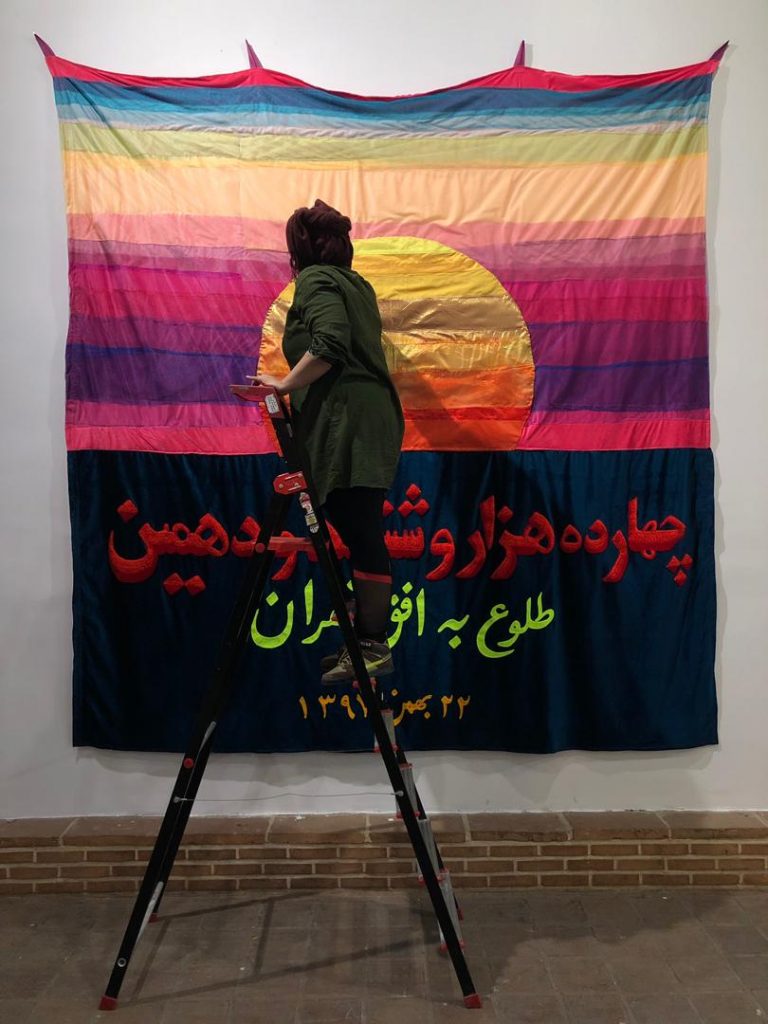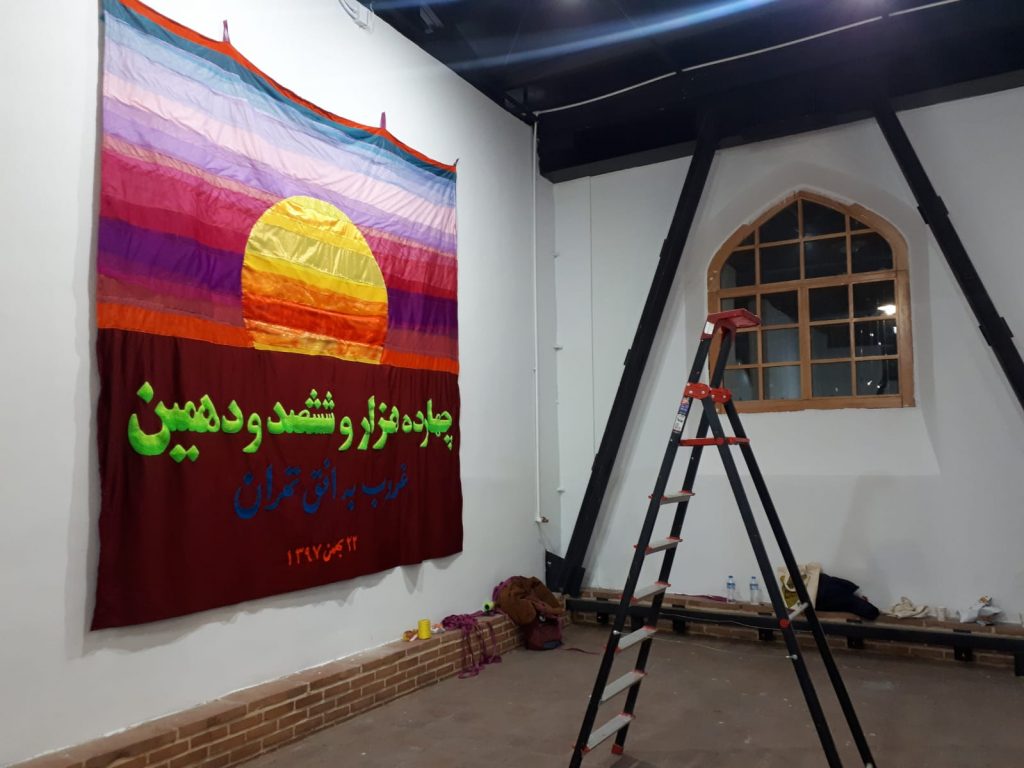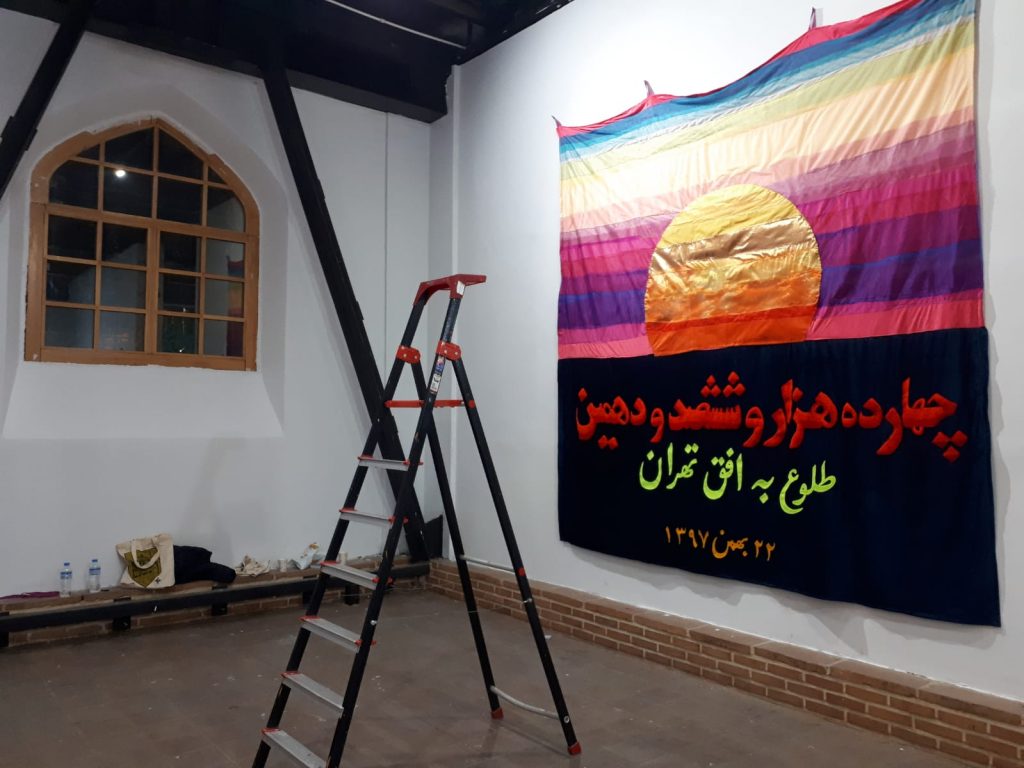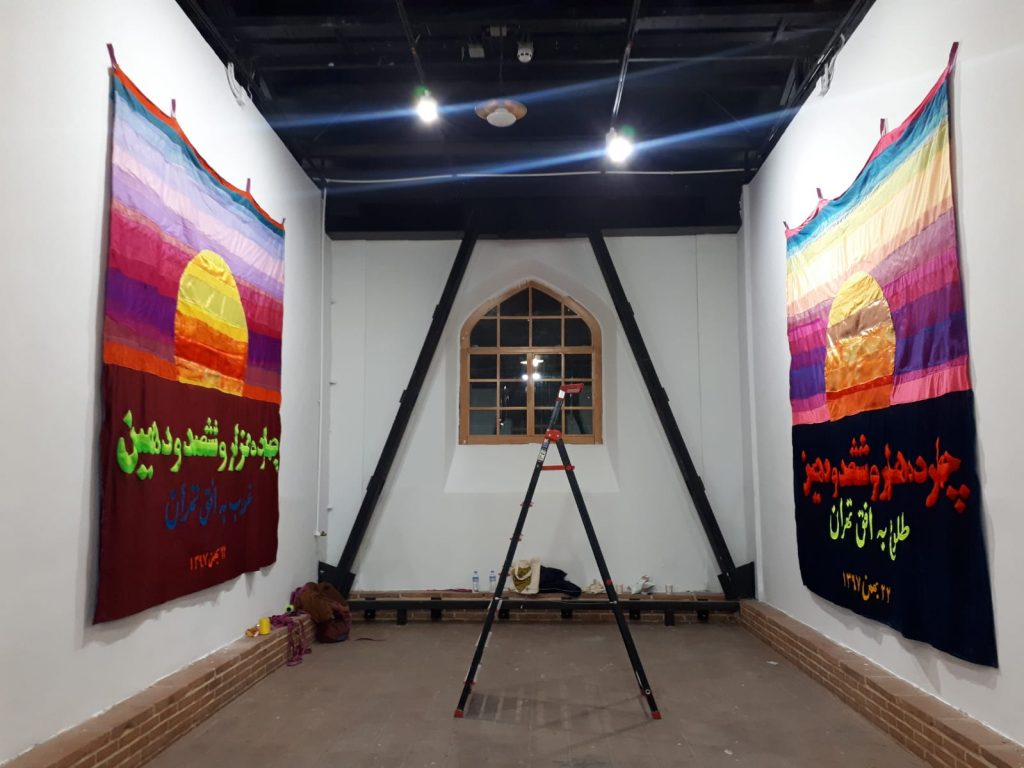Golrokh Nafisi
Installation of 2 handmade flags (2,5mx3.5m)
Fajr Visual Art Festival,
Ghasr Museum, Tehran
Presented by Dastan gallery
February 2019

Revolving times is an installation conceived on the occasion of the 40th anniversary of the revolution in Iran, consisting of two hand-made curtains, in collaboration with an embroidery maker of Tehran’s grand bazaar. The two large pieces, installed facing each other, are depicting sunset and sunrise and suggesting the colors of the sky during these specific times of the day. Below the line of horizon an embroidered number is counting the sunsets and sunrises from the day of the victory of the revolution in 1979. The curtains are accompanied by a written statement.
Statement :
1- Rather than the canonical teleological conception of time, in which it is assumed that the past is behind us and the future ahead of us, it is possible to think time qualitatively, as an ongoing movement intertwined both to the past and to the future as well as to the present, current moment. That which occurred in the past is never over, and that which we imagine will happen in the future has already begun in the present.
2- Historically, Iranians divided night and day into five distinct periods of time (”gah”). According to this scheme, days would not go by the hours—or measured time, but the duration of each day would depend on the position of the sun and the moon as well as their shadows. Sunset and sunrise are both central determinants of time, as markers of the beginning of night and day, respectively. In the moment the sun is setting or rising, a pause occurs outside of time. In those instants at the edge of darkness, as the first signs of light come out—or at the edge of light, when darkness has not yet enveloped the Earth—there is a moment in which our perception falls into a visual ambiguity, as our eyes mistake the distance, size, and shape of what we see. Within these errors of vision, however, there lies the opportunity to take away some ground from our perception, in favor of imagination. To balance this ambiguity by envisioning abstractions.
3- The general concept of time existing in oral storytelling across the Islamic world is cyclical and rotational. Epochs come to an end one after another, only to begin again. In the 1001 Nights, this cycle of time spans finds its expression in the transition from story to story. In the end, the parallel worlds of the story’s different characters come together in such a way that in the final moment they connect to each other and to eternity. According to the popular beliefs of Muslims, every moment produces eternal and everlasting blessing.
4- The moment of Iranian Revolution’s triumph is the zero hour of our history; the event splits time itself into before and after, for us and forever. What is our temporal distance from this originary event? Does the combination of these two words—40 years—suffice to bring together this whole collective and plural history? Or do we rather need new linguistic and visual combinations in order to account for our affective perception of time in order to include those gah we have passed through and continue to pass through?
Counting sunsets and sunrises since the day of victory is an attempt to imagine parallel calendars and new perceptions of time, to allow our plural languages to make space for our historical narratives, as well as to convert time into qualitative and affective gah that begins from a shared origin but are expressed in plural tongues. If converted into a count of the days and nights that have elapsed since that moment, these calendars allow us to start counting again, from today on, while reimagining them in the process.
If we turn the calendars into days and nights spent and recount from the sunset on 11 February 1979 to the evening on 11 February 2019, the Alborz Mountains above Tehran have been witnessing fourteen thousand and six hundreds and ten suns dawning on the horizon of Tehran.
Golrokh Nafisi
Febrary 2019
Tehran


